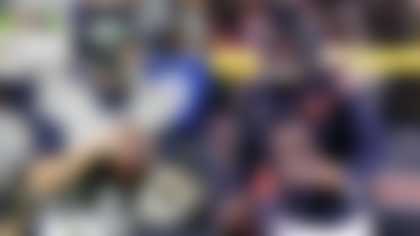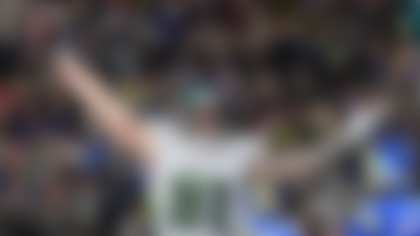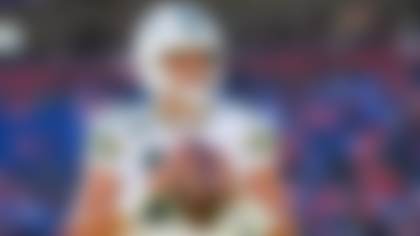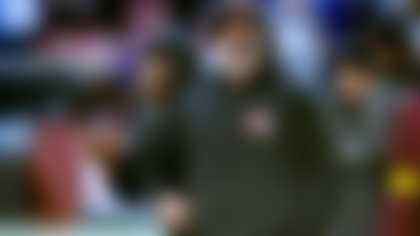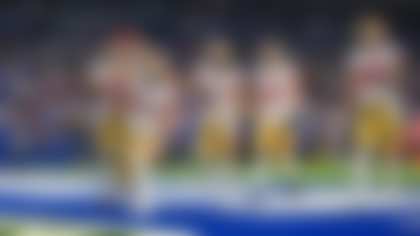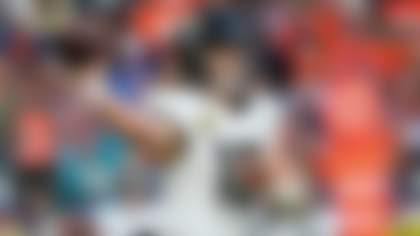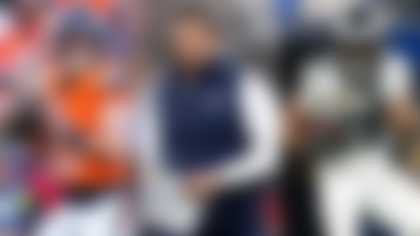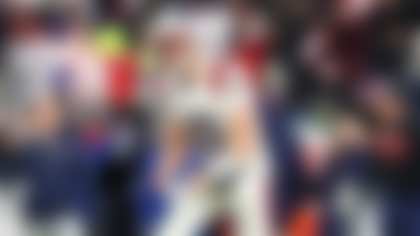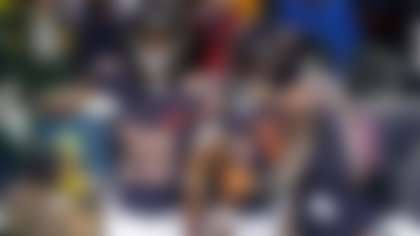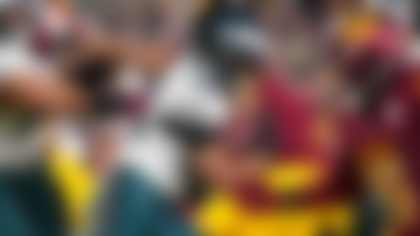When I check in on contenders and pretenders around this time, I usually write about the Super Bowl potential of the division leaders. But this season, we're switching up to focus on the seven teams all sitting at 2-2. My editors thought it would be more useful to put these teams under the microscope -- and help determine what it would take for each to make the postseason.
My findings -- from running the simulations and looking at the main driving factors -- made for probably my favorite version of this article ever, meaning my editors were right. Enjoy, and feel free to weigh in! You can find me @cfrelund on Twitter.
CONTENDERS

It might seem safe to assume the Chiefs are better than their record, but anyone worried about the slow start can take heart in the analytics. Next Gen Stats flag Patrick Mahomes' performance when passing outside the numbers as an area due for regression -- in a good way. On throws outside the numbers last season, Mahomes had a completion percentage of 67.6, logging 8.5 yards per attempt and 21 touchdowns with one interception. So far this season, he's tracking at a 60 percent completion rate on such throws, earning 7.0 yards per attempt, with only one touchdown against one interception. Running back Clyde Edwards-Helaire, meanwhile, is averaging 5.4 yards per rush against a light box this season, which is close to his average from 2020 (5.6). He forecasts to continue to face favorable circumstances, due to constant passing threats from his teammates.
As for Kansas City's defense, lemme contextualize it this way: Let's say through four games, the defense rates a 6 on a scale from 1 (being the worst) to 10 (being the best). Then consider that offenses compensating for lesser defenses end up doing more, meaning the chances of having a negative play increase. So far this season, Kansas City has been hurt by Mahomes interceptions (four) and Edwards-Helaire fumbles (two lost), but these are low-probability plays, based on Mahomes' 1.0 percent interception rate in 2020 and Edwards-Helaire's zero fumbles last season. The offense has a high probability of eliminating these negative plays, even if forced to pass more often. So if the defense can improve even by a marginal amount (say, jumping to a grade of 7 out of 10), that would pay great dividends, especially given Kansas City's difficult schedule. The Chiefs make the playoffs in 83.6 percent of simulations.

The Titans, who make the playoffs in 60.9 percent of simulations, benefit from being in the AFC South, which they are the most likely to win, and which is also the most likely division in the NFL to produce just one playoff team this season. Per Next Gen Stats, Ryan Tannehill has been pressured on 33.9 percent of dropbacks, the fifth-highest rate in the league -- and this matters because his completion rate drops from 69.4 percent when not pressured to 47.5 percent when under pressure. Still, the presumed return to health of receivers Julio Jones and A.J. Brown, combined with Tennessee's exceptional rushing potential, should keep the Titans in games and drive their projected division title.
NGS shows that Derrick Henry has 76 rushes outside the tackles, which paces all running backs by 15 attempts. He's had three games with 20 or more rushes outside the tackles. (Cincinnati's Joe Mixon is the only other back to reach this mark, and he's only done it once.) On these runs this season, Henry has earned 395 yards (5.2 yards per attempt) with a touchdown -- that total is +56 rush yards over expected.

Ahead of the season, the NFC West was projected to be the most competitive division in football -- and four weeks in, that continues to be true. (Yes, I checked this group against the AFC West.) Still, the Niners make the playoffs in 52.4 percent of simulations, even with uncertainty at the quarterback position. Star tight end George Kittle has not been targeted on his routes as often as he has been in previous seasons, logging a target on 26.5 percent of routes in 2021 after reaching marks of 30.1 percent in 2020 and 33.5 percent in 2019. But based on the NGS numbers, there is reason to believe Kittle will be targeted more frequently in the future: He's been open -- meaning, he's gotten 3-plus yards of separation -- on more than half of his targets (51.7%).

While the Cowboys project to win the NFC East, Washington makes the playoffs in 51.2% of simulations as the second wild-card team in the conference. In the absence of injured QB Ryan Fitzpatrick, Taylor Heinicke has performed well in Washington's scheme with running back Antonio Gibson, who leads the team in yards from scrimmage (360) and touches (67). NGS shows that when Heinicke stays clean, his passer rating is 108.2 and his completion rate sits at 73.7, which ranks ninth in the NFL in such situations. Heinicke is also aided by his lead receiver, Terry McLaurin, who is currently ranked second in win share among wide receivers (1.3 games).
PRETENDERS

UPDATE: The Seahawks lost to the Rams, 26-17, Thursday night in Seattle.
The Seahawks only make the playoffs in 43.7 percent of simulations, and while that is admittedly one of the higher figures among pretenders, it is below the cutoff. The NFC West remains the division with the best chance to send all four teams to the playoffs, but this is still not likely to happen.
I have Russell Wilson and his receivers ranking toward the top among their peers, but the play of the offensive line, which I have ranked among the NFL's bottom three, has taken a toll on the passing game. One of the ways you can see this is Wilson's recent dip in deep passing: He's averaging 8.7 air yards per attempt this season and averaged 8.6 in 2020, compared to 9.5 in 2019 and 9.2 in 2018. As in the second half of last season (after putting up 9.1 air yards per attempt in Weeks 1-10, he slipped to 7.8 in Weeks 11-17), Wilson (who's been sacked 11 times this season, tied for sixth-most in the NFL) can't overcome the lack of protection. Russ can cover a lot of issues, but he can't cure everything.

With playoff chances of 42.8%, the Saints sit near the top of the pretender list. Why? Because they're a little confusing. The biggest problem for the Saints is that the Panthers are good, and New Orleans will likely be haunted by its early season head-to-head loss to Carolina. We knew the Bucs would be a top team, but the emergence of the 3-1 Panthers hurts the Saints' chances to move into playoff position.
What we do know about the Saints is that Sean Payton is playing to the strengths of his team. The defense, when healthy, is currently tracking as a top-seven unit. Alvin Kamara is still Alvin Kamara. And the coaching staff is setting quarterback Jameis Winston up for success with a conservative script that will keep the team in the games (from Week 2 on, Winston has completed only ONE deep pass out of six attempts, with 58 yards and one pick to show for them). The return of injured receiver Michael Thomas should allow us all to see what this offense really looks like, as it presumably opens up for Winston.
However, there are so many things working against the Saints this season, including being displaced the first month of the season -- and challenges like those can't always be overcome with great coaching and game management.

At 24.1 percent, the Bears have the lowest playoff chances on this list. My models strongly weight O-line play, and the Bears' unit forecasts to finish in the NFL's bottom five. New starter Justin Fields can spice up the attack; though his completion rate of 48.1 percent is far lower than Andy Dalton's mark of 73.5 percent, Fields is putting up more than twice as many air yards per attempt, with 9.4 to Dalton's 4.2. But unless the Bears (who are tied for second in the NFL with 16 sacks allowed) are going to provide Fields with better protection, the big-play capability will be limited, and the passing game will continue to struggle. Per NGS, the Bears have 11 completions and 23 attempts of 10-plus air yards this season, putting them at the bottom of the NFL ranks in both categories.
Follow Cynthia Frelund on Twitter.

